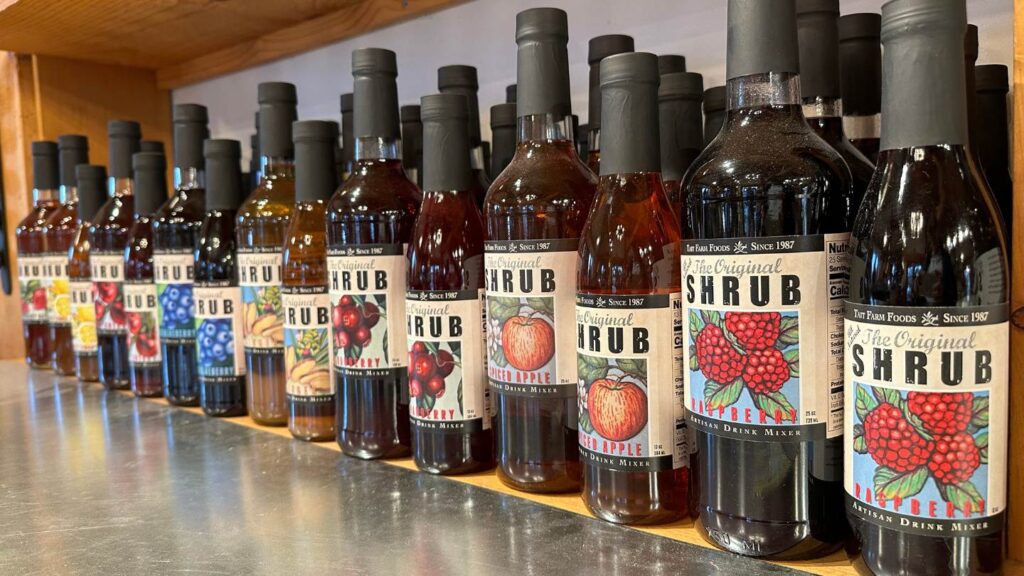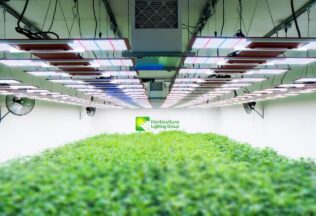Specialty Food Manufacturer Meets FDA Requirements and Sustains Growth with MRP Software
Tait Farm Foods adopted MRP software to get a clear overview of their operation and increase profitability. “We went from modest inventory management to full understanding of our manufacturing process,” says Sales Manager Karen Addenbrook. “It has been terrific for our business and made us enormously more efficient with our time and spending.”

You can also listen to this article:
Problem-solving leads to the modern shrub revolution
Tait Farm Foods is a specialty food manufacturer located in Centre Hall, Pennsylvania. The company began in 1987, when necessity gave way to invention. Founder David Tait started producing shrub, a colonial-era vinegar- and fruit-based drink mixer, after a particularly bad rain storm threatened to destroy their raspberry crop.
For decades, the company remained on-farm, manufacturing a variety of shrub flavors, as well as fruit spreads, chutneys, and vinaigrettes. After years of steady growth and demand, the business moved into a dedicated manufacturing facility just a few miles from the family farm. That same year, author Michael Dietsch published a book entitled “Shrubs: An Old-Fashioned Drink for Modern Times”, where he said that Tait Farm had launched the “modern shrub revolution”.
Since then, Tait Farm Foods has been on a growth streak and today, their 20 person team manufactures and sells more than 65 all-natural food products, including more than 15 different flavors of shrub, to restaurants, retailers, museum shops, online shoppers, and to walk-in customers in their flagship store, the Tait Farm Harvest Shop.
Production manager was “running blind”
Managing this growth has been a huge task for both Sales and Marketing Manager Karen Addenbrook and Production Manager Nikki Mattern-Klinger. The pair has had to strike a delicate balance between demand and supply while selling in several different channels including online wholesale marketplaces, wholesale direct, Amazon, and their own online and offline stores.
“As production manager – the person who has to make sure everything we sell is actually made – I didn’t know what orders were coming in, how much we had sold, how much we had in stock,” says Mattern-Klinger, “I was running blind.”
Before 2019, the business was still managed on spreadsheets and physical paper. Although difficult in any industry, the traceability requirements of the food sector made controlling everything an even bigger burden.
“We need to keep track of lot numbers to know which wholesale customers get which lot,” Mattern-Klinger says. “This was done manually on paper and in an unsearchable spreadsheet and it would have been a mess if we had to organize a recall.”
Going through multiple solutions
The managers knew it was time to create greater efficiency and began a deep dive into understanding inventory integration solutions. Initially, they opted for a software primarily designed for e-commerce inventory management. While much better than nothing, the solution couldn’t handle offline orders, raw materials, or manufacturing.
“It didn’t give us an honest view of what was available for purchase beyond the end product already on the shelf in backstock,” says Addenbrook.
“The software only accounted for online orders, leaving us to manually adjust inventory levels for offline purchases,” adds Mattern-Klinger.
Another solution was therefore needed to consolidate all the data within a single system. First, Addenbrook and Mattern-Klinger tested a software that wooed them with its user-friendliness but then disappointed them with price hikes and limited functionality. Then, they found MRPeasy.
A solo implementation of an MRP software
Although MRPeasy was affordable and had a similarly modern interface, the depth of functionality it offered towered above the other options. In addition, the platform was integrated with a variety of third-party applications, making the unification of all the company’s operational data a real possibility.
“Apart from QuickBooks, the Zapier integration was a big one because this gave me the confidence that I could link MRPeasy to any application if I needed to,” Mattern-Klinger explains.
Mattern-Klinger used MRPeasy’s comprehensive online support materials to take responsibility for the implementation and data integration with confidence. In just two months, the new system was live. With herself being the primary user, additional functionality was phased in during the following months and recently the new system was rolled out to the whole company.
“In total, it took a year to get the entire business integrated because we experienced a bit of reluctance from internal stakeholders who couldn’t believe that MRPeasy would be as big of a help across the company as it is,” Addenbrook says. “In the end, those people who resist change are usually the ones that are happiest to actually see it.”
New system enables analysis and reduction of costs
Today, all orders are processed in MRPeasy from start to finish and according to the pair, it has been a game changer. In addition to the FDA-approved traceability MRPeasy has allowed them to achieve, the company now has a firm understanding of what they have in stock and how much finished product they can produce with the ingredients they have in-house. Moreover, they can easily forecast their material requirements for specific products based on the historical sales data collected by MRPeasy.
“We now have much more clarity around how much we need to buy and when we should buy it,” Addenbrook says. “This enables us to confidently purchase larger quantities, thereby reducing our material costs. Not to mention how much time Nikki saves on calculations and data entry.”
The company has a much better grasp over its costs overall as the new software keeps track of everything continuously. Before implementing the system, they analyzed their product costs and prices once a year, but now they can quickly react whenever there is a significant change in ingredient prices or labor costs. In addition, they can identify slow-selling items and take appropriate action.
“Before MRPeasy, I used to spend hours and hours trying to figure out the performance of our products and their costs and documenting them in Excel sheets,” Mattern-Klinger states. “The new system saves me so much time doing this.”
“We are more profitable now because we know exactly what it costs us to make our products,” Addenbrook adds. “And we can increase or decrease our prices as we go along.”
Growing manufacturers should not feel overwhelmed
Another benefit Tait Farm Foods takes advantage of is MRPeasy’s capability to provide accurate lead time estimates for incoming orders. This, along with quicker order processing times and air-tight production schedules, helps the company fulfill orders on time and maintain better relationships with clients.
“I can press a few buttons and instantly know when we’ll be able to deliver the goods to a client,” Mattern-Klinger says.
All in all, Tait Farm Foods has seen substantial efficiency improvements across the operation, which has sustained their growth and increased their confidence on their road to further expansion.
“With MRPeasy, we moved from modest inventory management to full-scale understanding of our manufacturing process,” Addenbrook adds. “We know what our capabilities are at any given moment, everything is just a click away, and that gives us the opportunity to take better advantage of our capacity. It has been terrific for our business.”
“To other growing manufacturers I would say – don’t feel overwhelmed by MRP software. The effort is worth it as you will soon start seeing how much time it actually saves you,” Mattern-Klinger says as a final remark. “And meeting FDA requirements is so much easier having implemented a system like this.”
You may also like: Sonar Systems Manufacturer Cuts Material Planning Time by 90% with MRP Software




